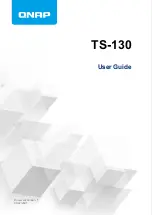
T
T
T
S
S
S
3
3
3
2
2
2
M
M
M
~
~
~
1
1
1
G
G
G
C
C
C
F
F
F
8
8
8
0
0
0
80X CompactFlash Card
Transcend Information Inc.
V1.1
18
meeting all AC timing requirements: 50 pF at a DC current of 400
μ
A low state and 100
μ
A high state.
5) Status Signals: the socket shall present a load to the card no larger than 50 pF
10
at a DC current of 400
μ
A low state
and 100
μ
A high state, including pull-up resistor. The card shall be able to drive at least the following load
10
while
meeting all AC timing requirements: 50 pF at a DC current of 400
μ
A low state and 1100
μ
A high state.
6) BVD2 was not defined in the JEIDA 3.0 release. Systems fully supporting JEIDA release 3 SRAM cards shall pull-up
pin 45 (BVD2) to avoid sensing their batteries as “Low.”
7) Address Signals: each card shall present a load of no more than 100pF
10
at a DC current of 450
μ
A low state and
150
μ
A high state. The host shall be able to drive at least the following load
10
while meeting all AC timing
requirements: (the number of sockets wired in parallel) multiplied by (100pF with DC current 450
μ
A low state and
150
μ
A high state per socket).
8) Data Signals: the host and each card shall present a load no larger than 50pF
10
at a DC current of 450
μ
A and 150
μ
A high state. The host and each card shall be able to drive at least the following load
10
while meeting all AC
timing requirements: 100pF with DC current 1.6mA low state and 300
μ
A high state. This permits the host to wire
two sockets in parallel without derating the card access speeds.
9) Reset Signal: This signal is pulled up to prevent the input from floating when a CFA to PCMCIA adapter is used in a
PCMCIA revision 1 host. However, to minimize DC current drain through the pull-up resistor in normal operation the
pull-up should be turned off once the Reset signal has been actively driven low by the host. Consequently, the input
is specified as an I2Z because the resistor is not necessarily detectable in the input current leakage test.
















































